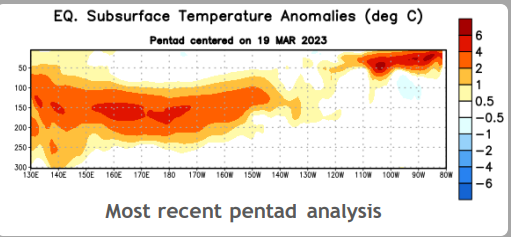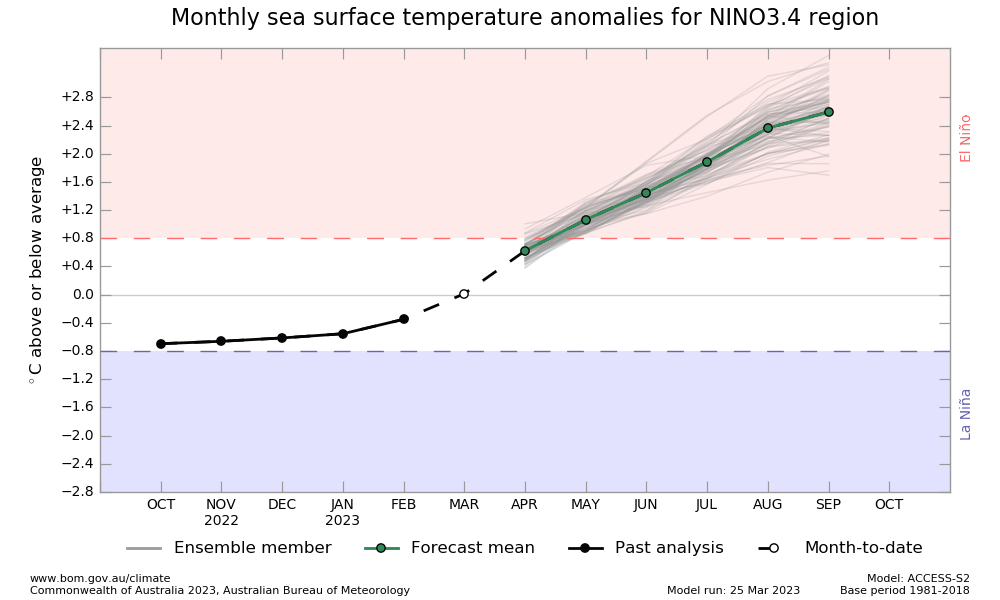
Every season, Southwest Monsoon rainfall prediction gets fragmentad during spring time. The fear being, the forecast is likely to be marred with 'spring predictability barrier'. Model accuracy while forecasting through the spring season is lower than at other times of the year. ENSO outlook extending beyond the 'spring' need to be treated with caution.
As such, the process of ENSO forecast based on dynamical and statistical models is complex and cumbersome. Both, the oceanic and atmospheric variables need to resonate simultaneously. Coupled oceanic and atmospheric models must get aligned adequately to reach logical conclusions.
ENSO prediction based on large number of numerical models operates under inherent limitations.

The key atmospheric variables are now indicating ENSO-neutral conditions.

In the oceanic variables, positive sea surface and sub-surface temperature anomalies have expanded to cover the entire equatorial Pacific Ocean. The summation of oceanic and atmospheric variables now assuringly lead to ENSO neutral state.

Despite convincing projections of emerging El Nino during Indian Summer Monsoon, a strict call is yet not being taken amidst apprehension of 'spring predictability barrier'. There are no definitive culprits as to why the spring barrier exists. El Nino event tends to develop in April-June and reach their peak during October- February. So, 'spring' is the time when El Nino/ La Nina events are decaying after the winter peaks. Spring as such being a transition period, ENSO may be shifting around sometimes passing through neutral, leading to uncertainties. There is also weaker coupling between the ocean and atmosphere during spring due to a reduction in the average SST gradient in the tropical Pacific Ocean.

During this period, because of ensuing changes, the signal strength may be low and noise could be high for the models. Spring Predictability Barrier is considered as deep drop in ENSO forecasting when the models have a harder time making accurate predictions. Still these reasons are not sufficient to explain the lower skill.

It is harder to predict the start or end of an event than to predict the trend of event that is already occuring. During ENSO, dynamical models are weighted better than the statistical. Why?. One of the attribute of dynamical model is that they are run more frequently, using the most recent observed date as input. Factually, numerical models work with the basic premise of solving atmospheric equations with a set of initial conditions. This is then repeated several times to enhance the duration of forecast. If an error creeps in at the beginning, it keeps on growing with each repetition. Therefore, long duration forecasts are vulnerable to go off the mark, unless strict checks and balances are maintained and course correction applied to minimise inaccuracies.
Many statistical models are built on monthly or seasonal average data and therefore, in comparison to dynamical models, inputs could be relatively older. Consequently, these may not be able to catch the potentially important changes. Though, dynamical model skills may be relatively better than the statistical model, but still remains below the desired levels.


